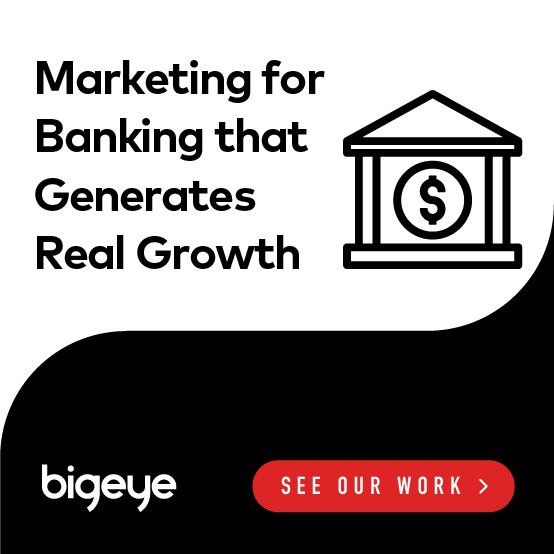
Banks and other financial services need an edge to stay competitive. Here’s why content marketing can help them better connect with prospective customers.
Banks and credit unions are hardly celebrated for their innovation or mastery of digital tools. There’s a reason for this: The industry is by nature conservative, and it is also constrained by regulations. This is why the banking sector has been relatively behind on the digitalization curve.
Yet this also provides an opening for financial services enterprises — as long as they are willing to adopt new approaches that are aligned with changing consumer preferences. One recent example is the Capital One Cafe, a coffeehouse/bank location hybrid that allows customers to enjoy meet-ups and drink coffee while conducting basic banking services. This “bank barista” concept was designed to target the millennial market and make banking an enjoyable experience, rather than routine drudgery.
With banking services increasingly migrating online, however, banks and credit unions also need to harness the full potential of digital tools. Content marketing, specifically, is one of the most impactful things a bank can do to modernize its digital strategy and generate new business.
Let’s take a closer look at why this approach pays dividends, and how partnering with the right content marketing agency will help deliver results.
Developing a content marketing strategy that works
Financial marketers understand the value of strong content marketing. A recent Brandpoint survey showed that financial marketers view content marketing as an essential tactic for generating brand awareness and engaging with customers. That same survey, however, showed that half of financial marketers struggle with content creation and staying current with the latest techniques.
Other common problems include:
- Insufficient resources to create top content
- Inability to determine ROI or effectiveness of the content
- Poorly defined strategy
- Difficulty managing a multi-channel approach with consistency
- Lack of budget
- Lack of content marketing expertise
- Leadership not buying in
That financial services firms struggle with content marketing is not surprising. If you asked most people about memorable marketing, banks would certainly not top the list. Some financial services firms, however, know how to do content marketing correctly. Here are two examples:
- Citibank is highly-regarded for its brand awareness initiatives — and for good reason. The company’s sponsorship with New York’s popular Citibike program means that 10 million-plus New Yorkers can’t rent a bike without thinking about a bank. Citibank also uses content marketing and sponsorships with major artists as part of its Citi Entertainment program for customers. In both cases, Citibank attaches its name to something that consumers love (bike riding, concerts) — a significant boost, considering most bank brands have little inherent cachet. It’s an example of savvy bank marketing.
- Deloitte is best known for being a global consultancy and financial advisory operation. Not exactly the type of enterprise to give retail consumers warm and fuzzy feelings. Yet every year Deloitte issues a “Back to School” survey that uses clever, data-rich visuals to help consumer optimize their purchasing habits. It’s not related to Deloitte’s core business, but it is a smart piece of content marketing that improves brand awareness and builds brand trust. Parents engaged with this campaign identify Deloitte as a company that helps them solve a perennial problem.
So now that we’ve discussed some challenges and seen some strong examples, let’s talk about what financial services firms can do to jumpstart their content marketing efforts and start building brand awareness and loyalty.
Actionable advice for your financial content marketing strategy
Companies that generate exceptional ROI from their content marketing efforts tend to have some commonalities. A recent Content Marketing Institute research survey investigated the factors shared by firms that are especially successful in this regard. According to this research, the four elements that separate winners from losers are:
- Having a documented content marketing strategy. 65% of firms who report being successful in content marketing have such as a strategy, while only 14% of unsuccessful firms have one.
- Measuring the ROI of content marketing initiatives. 72% of successful firms do this, while only 22% of unsuccessful firms measure ROI.
- Proficiency with the latest content marketing technology. 67% of successful firms report proficiency, while only 7% of unsuccessful firms do.
- Using personas for content marketing campaigns. 77% of successful firms use personas, while only 36% of unsuccessful firms use them.
By implementing or improving these four elements, you can lay the groundwork for a high-performing content marketing strategy. Not every financial institution or marketer has the experience of savvy to get the most out of this approach, however. In these cases, it makes sense to partner with a leading content creation agency.
Finding the right inbound marketing agency
If you’re in need of SEO marketing, content marketing or any other digital marketing service, we encourage you to contact Bigeye. We have the technical skill and domain expertise to help financial institutions gain immediate traction with high-performing digital marketing campaigns.




